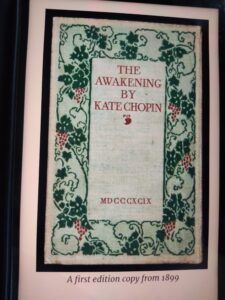
Discussion on A Rose for Emily, a Short Story by William Faulkner
Author Introduction:
William Faulkner was an American novelist and short story writer. This Nobel laureate wrote numerous stories and novels. Among his stories, A Rose for Emily is one of the most significant one that evokes a grotesque gothic sensitivity among the readers as well as underpins them till the last scene.
The story was first published on April 30, 1930. Later in 1931, it was reprinted in These Thirteen, a collection of thirteen of his stories. When we read the story we can feel the unique excellence of Faulkner’s storytelling style.
Section-1
Town people gathered for the funeral of Emily Grierson who was a 74 years old spinster who remained confined in her house for all her life. Emily’s father Mr Grierson once lent huge money to the Town Community. So the previous Major Colonel Sartor suspended her tax responsibilities after her father’s death. But the new Major asked for Tax which Emily refused with firm stubbornness. In the face of her consistent denial Town Community had to retreat.
Section-2
The story turned back 30 years back when the townspeople found bad odour emanating from her house. They complain to the office of the Mayor. But the officials didn’t probe her. Instead, they sprinkled lime around her house at night secretly. Gradually the smell subsides. The townspeople always pity the reclusive nature of Emily.
After her father’s death, Emily didn’t allow town’s people into her house. She constantly negated his death. But after three days of persistent denial, she had to confess and agree to his burial. In the meantime, his fiance left her.
Section -3
Emily fell ill… seriously ill. Later she became engaged with a supervisor of a road construction company. He was Homer Barron. People started talking about their relationship. Town people took pity on Emily for her choice as if she had no option. Homer belonged to a higher class and Emily was from an aristocratic society.
Emily bought arsenic from a drug seller. It was a tough battle to get it as selling arsenic is illegal. But she was able to manipulate the drug seller and her servant brought it for her under the level, ” for rats”.
Section – 4
Town’s people apprehended that Emily was going to suicide. They could not agree with the intimacy of Emily and Homer and their possible prospect of marriage. Emily’s cousins were called to stay with her. Homer left her. But after the cousin’s departure, Homer returned. But people never saw him again. They thought he had left Emily.
Gradually Emily grew plump and her hair started getting grey. She made herself more and more secluded. No one could see or visit her except for a glimpse of her from her window. Only a black servant used to work for her but he was too reticent to pass any news of her.
Section -5
Here narrator describes what happened after Emily’s death. It is the final and linking part with section -1. Curious people who were denied any entry to her house for decades flooded into Emily’s s house. The black servant surreptitiously left her home allowing the people to explore on their own. The over-curious people went to the locked room upstairs. They saw a terrible vision. Time seemed frozen in that room. The room was decked with all the arrangements for an upcoming wedding. From the bride’s dress to the groom’s wedding suit all were kept in perfect condition.
Then they found Homer Barron’s body on the bed…decomposed, decayed, skeleton. Adding to their shock they found a long strand of Emily’s grey hair on the pillow just beside the body of Homer.
Significance of the title:
I feel the title is allegorical. There was no rose for Emily…not a single one. Her life was cruel and secluded. Along with the town’s people, the author also pitied Emily that’s why he named it ‘A Rose for Emily.‘
Narrative structure:
An unnamed narrator who is at the same time a powerfully omnipresent voice narrated the life of Emily and town people’s attitude and activities toward her. The story is told in different methods. Sometimes the narrator glues us to the present and sometimes takes us to the past through flashbacks. And this violation of a linear structure heightens the poignancy of the characters and situations.








Pingback: An Angel in Disguisea short story by T.S. Arthur